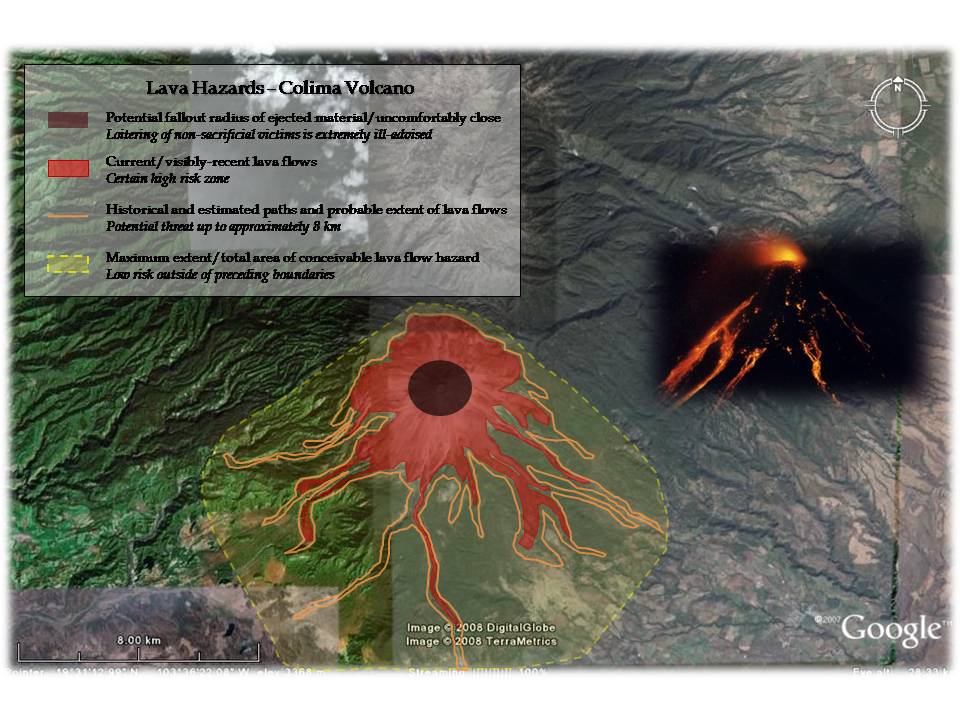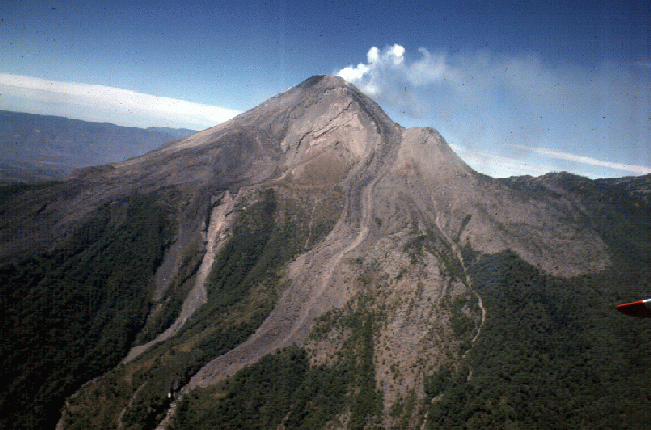|
|||
|
When designing this hazard map, I used data from the existing hazard map of Colima issued by the Observatorio Vulcanológico, as well as my own observations and conclusions through the use of Google Earth. The recent lava flows were visible, and could thus be easily traced, and the historical and estimated paths of the lava were a compilation of my own observations of the topography, and the valleys in particular, and the aforementioned hazard map. The maximum extent was based on the predetermined maximum of 8 km as established by ancient eruptions and, is it is apparently not an even radius, on the topography, which to the north largely prevents lava flows of substantial distance.
Lava (lä’va) 1. Melted rock issuing from a volcano. 2. Such rock when solidified by cooling. The lava flows at Colima are not of the stereotypical runny sort that flow smoothly in streamlined channels, gradually enveloping palm trees and proving irresistible to the photography of tourists and the prodding of volcanologists. No, that would be basaltic lava. The lava produced by Colima is andesitic.
So what is the difference? 1. They are more viscous and have higher yield strengths, which means: 2. They are thicker and move much more slowly, traveling far shorter distances. 3. Flows can reach heights exceeding 100 meters, whereas basaltic lava flows generally range from a few centimeters to a couple meters. 4. They typically consist of large, smooth-sided, angular blocks, rather than a liquid or rubbly consistency. So what does this mean? According to the Observatorio Vulcanológico that monitors Colima, these flows travel less than 100 meters in a single day, so there is little danger of being caught off guard by one. In addition, the lava flows have not traveled farther than 3.5 km in the last 40 years, but older flows have been traced as far as 8 km from the vent. Obviously, the danger is quite limited, both in distance and degree, with few, if any villages or ranches in immediate, or even foreseeable danger. In addition, Colima is capable of canon-like ejection of ballistic bombs and blocks during characteristic vulcanian activity, which may be of both old and fresh material (volcanoes). According to the Observatorio, this material can reach distances of up to 5 kilometers from the vent, which contributes to making it the most dangerous aspect of a lava-producing eruption. |

